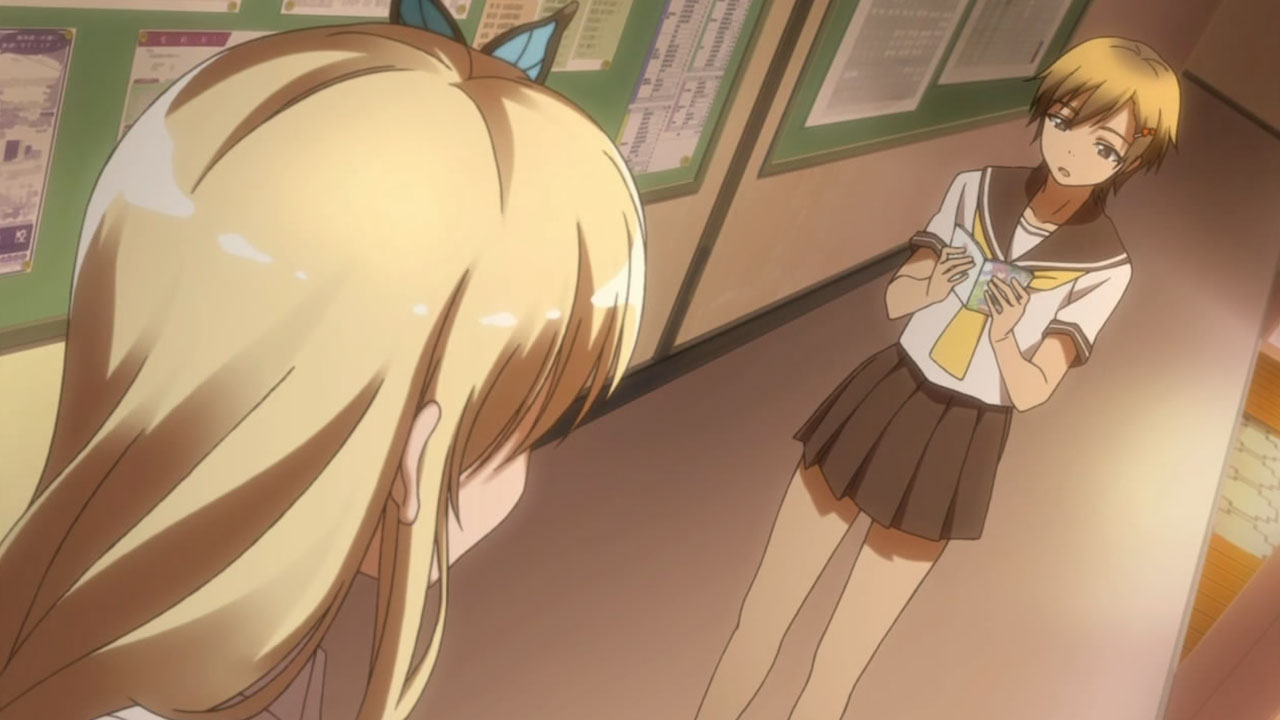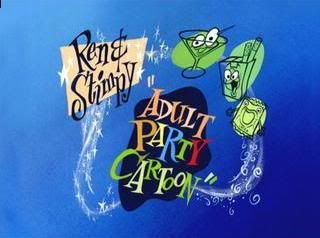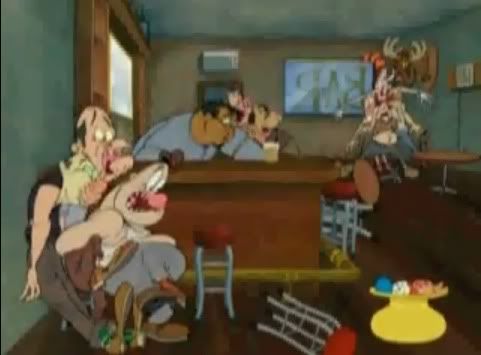This was going to be longer and have more shows, but we kinda’ ran out of time to work on it. Please enjoy what we managed to finish!
———-
The New Prince of Tennis

Oh hey, yaoibait’s back. Where all but two of the middle-schoolers are in their early twenties, tennis is treated like a DBZ battle, and sucks to your assmar for thinking that girls play sports. Instead, it’s only girly men who can play such stagnant sports. Because far be it for a shonen to actually appeal to viewers with a penis.
The animation’s bad even by anime standards. It uses so many still images of the characters looking right at the screen, it almost feels like it’s begging the fangirls to screencap this shit and masturbate to it. There are more Whitefin dolphins than there are frames of this episode. You’d think a tennis show, where the characters should be required to at least move their arms, would learn to get decent animation, but no.
Before you think there’s a good story behind this slideshow, fat chance. The premiere spends a quarter of airtime directly describing the characters and their personalities to the audience instead of slowly showing it to us throughout the episode. After all, long-running shonen series have absolutely little time to be subtle, right?
And aside from a decent joke about how commonplace glasses are now, the dialogue and characterization are shit. More time spent on generic trash talking and random glaring than actual plot development. At least a dozen rival team players get introduced, and we know nothing about them other than how they like to scowl. They always look at each other as if someone pissed on their dad’s corpse. There are like a few exceptions, but they aren’t any better. If anything, they’re more anything than the generic frowners.
And the engrish. Sweet Christ, the engrish. At least with shows like Black Lagoon, they did it because it was funny. Here, it sounds like they genuinely think that badly pronouncing words is somehow cool.
Rating: 1/10 – Dr. Insomniac
Bodacious Space Pirates
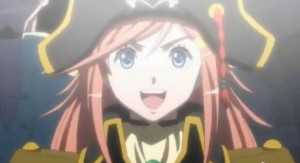
Gordon Bennett, I was expecting a fanservice romp with very little actual piracy. Instead, I received something that made me realized how long it’s been since a show had a really good start. From the premise, the pictures, and the bloody title, the show initially promised to be shit. But you look deeper, and the first episode made me remember why I got into anime in the first place. It delivers an exotic world with characters not too different from us roaming about. And while it carries some unfortunate clichés that other shows have, it’s at least savvy enough to subtly mock them.
The series shares a director with Martian Successor Nadesico, and it shows. The tone is very tongue in cheek, while not letting it sully the story. It allows the plot to slowly unfold while letting the characters establish themselves within their first few minutes. And the direction allows for some smooth animation despite rather obvious usage of CG. The mix of comedy, action, sci-fi, and what appears to be a looming conspiracy ensures that this show will prove to be a fine genre buster just like its predecessors.
Rating: 9/10 – Dr. Insomniac
Nisemonogatari

Imagine if a Taiwanese immigrant who knew not a single word of English watched The West Wing. That is how I feel when watching Nisemonogatari.
So what a surprise, I didn’t like it. Your precious Shaft show of the season is only endless talking heads with a silver of plot development. The dialogue doesn’t carry the plot or the characters. It’s just used to spew out exposition that the viewer already knows, as the cast just stand around doing nothing aside from the odd gag or headstand.
Granted, most of my apathy towards the show comes from being awful at understanding Japanese, and certainly unable to recognize any of the word play Nisio Isin has written. Through the translation of a fansub that is usually handled by amateurs who have to pop it out in a day instead of professionals who take their time adapting the script, very little of it works as the conversion can’t handle being changed like a normal fansub would. Instead, it just sounds like repetition and endless explanations written to slow down what would’ve been five minutes on a normal show to an entire episode.
Not to mention the underage panty shots.
That said, what seeps through works well. Shinbo’s direction is unique as always. Everybody except Hachikuji is tolerable. And the music’s pretty good.
Rating: 5/10 – Dr. Insomniac
Kill Me Baby

The summary for this show makes it sound as if it’ll play out like the comedy episodes of Full Metal Panic!, only this time with an all-female cast. Sadly, the brilliant sense of humor and characterization of FMP are nowhere to be found in Kill Me Baby. Sonya is a high school student and an assassin by trade, but it doesn’t really seem like she’s very good at her job. This episode makes her look like an incompetent fool (all for the sake of comedy, of course), while Oribe Yasuna, her best friend, does absolutely nothing of consequence and behaves as you’d expect an average slice of life character would.
Indeed, one look at the art style will clue you in that this series is more interested in the moe antics of some high school girls than clever jokes about an assassin trying to blend into modern-day society. And there’s nothing wrong with that, all things considered. The problem I have with this series isn’t that it’s painful to watch or offensively bad or anything. It’s just boring. There are quite a few humorous gags in the first episode, but Kill Me Baby insists on explaining literally every single joke immediately after its delivery, thus making it almost impossible to laugh or even chuckle when something funny does happen. Also bringing down the quality of the show is perpetually-stoned “ninja” Goshiki Agiri, a character who falls flat at every instance in which she appears.
The animation is, simply put, not good. This is a JC Staff production, after all; and while their work is generally more consistent than stuff by other bad anime studios like Deen and Gonzo, the character movements never once approach anything even resembling fluidity.
The voice acting is pretty decent — what you’d expect from a series such as this, really. On the other hand, the OP is horrifying; it’s like a Japanese woman tried to perform a Mr. Bungle tribute song and failed miserably. The ED and BGM fare far better, however.
I didn’t want to die while watching Kill Me Baby, but I did think about turning it off a couple of times. 4/10
— Foggle
Recorder to Randoseru
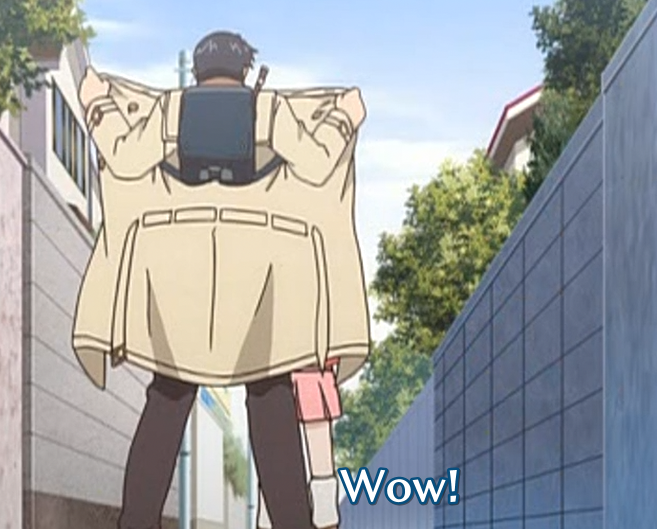
Apparently merely writing “it’s bad” isn’t good enough for the Clusterfuck. But really, there’s not much else to say about Recorder to Randoseru, since the episode is three minutes long, with 30 seconds of that being the ED. The above image is the only thing that happens in the entire episode; a nice, but stupid… elementary school student? What the fuck? That guy’s in fifth grade? You’ve gotta’ be shitting me!
Ahem. A nice, but stupid, elementary school (wtf) student named Atsushi is mistaken for a child molester when he attempts to loan his jacket to a small girl. Aside from the opening joke — one that’s present in nearly every single Spongebob episode — nothing else happens in this installment. Yeah, not much to talk about.
The animation’s okay (except for the weird way some chick’s breasts flop around during the ED), but the art itself is fairly terrifying. The voice acting and music are okay, too. The writing is bad, though, and that’s probably the only draw of a series like this.
Like I said, it’s bad. 2/10
— Foggle
Senki Zesshou Symphogear
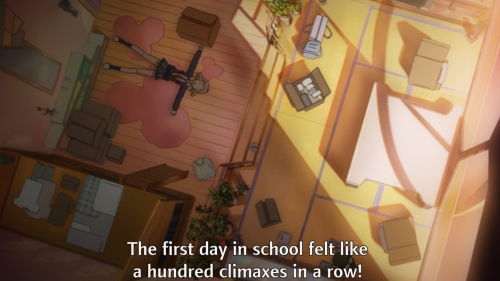
I guess some people really like attending class.
Wow. Symphogear is quite possibly the most insipid thing I’ve seen in months. Objectively, the usage of color and the high quality animation during action sequences are mind-blowing, but these elements are the only things this shit stain has going for it.
The story is as stupid as they come. Apparently this show is what happens when you mix gratuitous (mediocre, sometimes bad) singing with unnecessary science-fiction elements in a mahou shoujo anime. Whenever the magical girls comprising the music duo Zwei Wing fight the bad guys (named Noise by someone who must have erroneously thought he was being clever), they sing songs to channel their powers… or something. It’s not really explained, but it is painful to watch. Most of the songs can be easily filtered out as background noise, but one in particular is absolutely grating to listen to.
The characters can only be described as “empty shells.” The major players all have different personalities, sure, but they don’t have any qualities that make them feel real, an element that even the worst writers can often instill into their creations. It’s also worth noting that the only (slightly) likable character, Kanade, dies within the first fourteen minutes of the episode. Brilliant. The out of place and somewhat bizarre homoerotic overtones don’t help matters, either.
I don’t know if I can properly describe my distaste for Symphogear through text. It’s utterly horrible, and so painful to watch that more of your brain cells will die every minute you persist at sticking with it. The story sucks, the characters suck, and the music is both terrible and completely unfitting.
If you don’t watch one anime this season, make it Symphogear. 1/10
— Foggle
Highschool DxD

Story: Boobs and panty shots overlaid on top of some bullshit plot about high school demons fighting fallen angels.
Characters: Perverted losers and girls with oversized, often-exposed breasts wearing skirts short enough to show off their underwear.
Art: Nipples hard enough to be seen through a sweater.
Animation: Humongous floppy boobs and skirts flipping up in the wind.
Just watch some fucking porn or something. 0/10
— Foggle
Daily Lives of High School Boys

Tadakuni rushes from his house with a piece of bread sticking out of his mouth. “I’m going to be late!” he announces as I groan. Suddenly, his friends show up behind him; both are running to school alongside him, but one is eating curry and the other has a bowl of noodles. Then Gundams descend from the sky to attack the city and the guys explode as I laugh heartily. Thus begins the daily life of three high school boys.
This series is all about cute boys doing kind-of-but-not-really-cute things. It’s like Cromartie High School but a bit less witty (and not as weird). It follows the same pattern as other slice of life anime comedies, but unlike the vast majority of them, this one is actually really funny. Not every joke is original, but most of them hit the right notes, and few fall into the trap many anime series do of explaining the punchline after delivery. Timing is also expertly handled here, especially in the episode’s last sketch. The characters aren’t really distinct (yet), but they’re all likable and play off of each other very well.
The animation is merely good enough for a show like this (not great), but the voice acting is seriously hilarious. Every character sounds ridiculous and will probably bring a smile to your face. The music is great and the ED is perfect in the context of the episode. I didn’t expect to like this show, but I ended up greatly enjoying it.
This one is worth following if you have a sense of humor. 8/10
— Foggle
Originally posted on January 21, 2012

